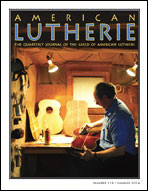 |
|
|||
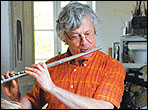 |
Meet the Maker: Olivier Fanton d'Andon by Woodley White Early in his career, French luthier Olivier Fanton d’Andon was asked to restore a Romantic-era guitar for a museum. He was impressed with the guitar’s highly arched plates, and adapted the idea to a classical guitar. He has made a successful career with the resulting design. |
|||
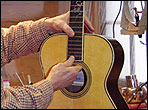 |
How I Build Forty-Eight Guitars A Year with Almost No Tooling — Part Two from his 2011 GAL Convention workshop by John Greven John Greven is famous for making a lot of guitars in his basement, all by himself, with a very limited set of tools. Sound like something you might like to do? Greven gives us the step-by-step rundown. Part One was in American Lutherie #117. Part Two takes us up through the binding, the construction of the neck, inlay, and finishing. |
|||
 |
Construction Methods of Early Spanish Guitarreros by James Westbrook So the “Spanish method” is to build a guitar face-down and put the back on last, right? Well, maybe not. Some older Spanish guitars appear to have had the tops put on last, based on clues like glue drips and the fitting of back braces. Also, tiny filled holes indicate that they may have been nailed into molds during construction. |
|||
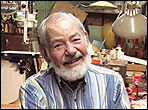 |
Meet the Maker: Wade Lowe by Kent Carlos Everett Luthier Kent Everett is a prolific guitar maker and teacher. So who was his early mentor? Wade Lowe, that’s who. Wade was a machinist who worked his way into lutherie and had a shop that became the mecca of a generation of Georgia guitarists and guitar makers. |
|||
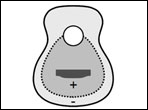 |
Selecting Guitar Wood Based on Material Properties, Part One by Trevor Gore How do you pick wood for a guitar? If you stood up and shouted “Science!” this is the article for you. |
|||
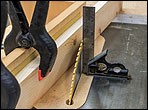 |
Multiscale Peghead Scarf Joint by Harry Fleishman So you are making a neck with a multiscale fretboard. The nut will be at an angle, not the normal perpendicular. How do you deal with that fact when grafting the peghead? Harry shows you a simple and elegant method of cutting a compound angle that matches the nut. |
|||
 |
Pore Filling with Superglue by Chuck Moore A big bottle of Superglue and a handful of paper towels gives you a nice flat filler/sealer in no time. |
|||
| Reviews by Pierre Audinet Audinet gives the thumbs-up to the new book by José Romanillos, “Making a Spanish Guitar”. |
||||
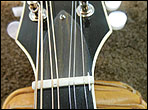 |
It Worked for Me by David Thormahlen, Jack Johnston, and Len Laviolette Fixing too-deep nut slots. Tools for bolt-on necks. A simple jig to make kerfed lining with a small circular saw. |
|||
| Questions edited by R.M. Mottola What are some good lutherie-related smart-phone apps? What areas of science would be helpful for luthiers to study? What is the best wood for a bridge plate? |
||||
| Savart Journal: Recent Research by R.M. Mottola Mottola translates the arcane jargon of articles titled “Simple Modeling of Acoustic Guitar Low-Frequency Behavior” and “A Geometric Approach to Drawing the Classical Guitar Body Outline” for us general readers. |
||||
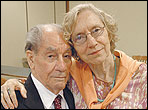 |
In Memoriam: Manuel Velazquez by Beverly Maher New-York-City guitar dealer Beverly Maher remembers her old friend and colleague Manuel Velazquez who recently passed away at age 97. |
|||
Web Extras |
||||
